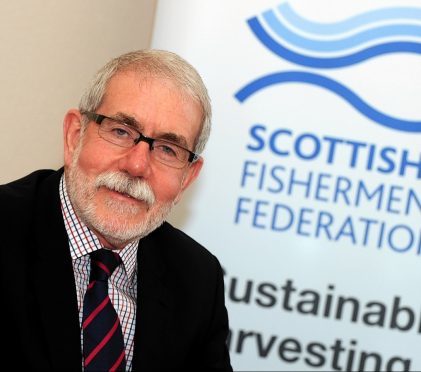Bertie Armstrong, Scottish Fisherman’s Association chief executive, writes for The P&J.
The annual EU quota negotiations are always a rather fraught affair and an abject reminder of the glaring deficiencies of the EU Common Fisheries Policy (CFP).
Fishermen’s livelihoods depend on the outcomes of these talks to decide on the catching opportunity for the following year.
Over the course of two or three days, there are frenetic talks among the ministers of all 28 EU states.
Compromises are tabled when agreement can’t be reached, followed by more convoluted negotiations.
Alliances are formed by groups of countries to press their cases – sometimes to our advantage but other times not, and so the talking goes on.
EU ministers and civil servants eventually fumble their way towards a final compromise and a deal is reached, usually in the early hours of the morning.
In short, fishermen’s futures are decided in a high-pressure environment. It’s not very edifying and a perfect example of how not to manage our fisheries.
Quotas for shared fisheries agreed in the run-up to this week’s talks cover some key North Sea species.
Norway, negotiating directly with the EU, was in a powerful position and ensured its twin objectives of sustainable fishing and a good deal for its fishermen were reached.
Norwegian fishermen already know their catching opportunity for 2017 safe in the knowledge they have achieved the best possible agreement.
Once the UK leaves the EU in a couple of years, we too will be in exactly the same position as a fully-fledged coastal state.
Full control of our 200-mile exclusive economic zone will provide the twin advantages of fairer shares of catching opportunity for our fishermen and better overall management.
It means Scotland and the UK can at long last implement fit-for-purpose fisheries management plans that are good for fishing communities and the environment.
But what about the talks starting today? Well, as ever, some quotas will rise and others will fall in line with scientific advice.
North Sea cod looks set for a small increase and the saithe quota will also rise.
Haddock is in line for a significant decrease – this is not a reflection of any notable decline in the stock, but rather a readjustment to accommodate a previous error in the scientific assessment.
A particular challenge for 2017 is that more species will come under the umbrella of the discard ban.
While no-one hates discarding fish more than our fishermen, the ban’s extension has the potential to cause real operational problems.
This is because of so-called choke species, where a mixed fishery has to close down in its entirety because the allocation of one species has been fully taken.
Herein lies another sea of opportunity in Brexit, for it will deliver an opportunity to develop a discards policy which works in practice and ensures sustainable fishing.
